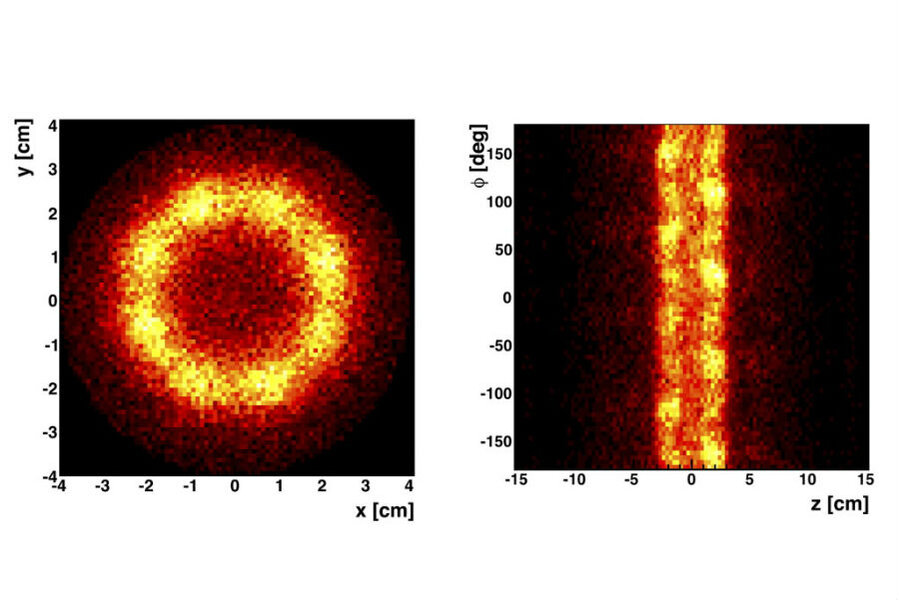Scientists use lasers for a better look at antimatter
Loading...
For the first time, scientists have been able to shine a light on one of physics's most mysterious substances – literally.
Physicists at CERN's Antihydrogen Laser Physics Apparatus (ALPHA) in Switzerland beamed a laser onto particles of antihydrogen, the antimatter counterpart to normal hydrogen, to determine whether light behaved in the same way for both materials. While hydrogen, the first element on the periodic table, has been studied for two and a half centuries, it has only been in the last few years that antihydrogen can be held in a stable enough state for direct study without being annihilated by contact with a particle of ordinary matter.
As its name would imply, antimatter is, in many ways, the opposite of matter. For example, the 'electrons' of antimatter have a positive charge, while ordinary electrons have a negative charge. According to the current understanding of physics, the Standard Model, the two should be diametrically opposed in every way. But there's one problem with that theory: during the Big Bang, matter and antimatter should have been created in equal quantities and destroyed each other completely, which leads physicists to believe that there must have been some small difference between the two that gave matter an edge. This experiment, researchers hope, will be an important first step towards determining why we exist in this vastly matter-dominated universe.
CERN's ALPHA collaboration represents one of the most significant technological accomplishments in physics. Researchers at ALPHA are able to create antihydrogen by bringing together the antimatter counterparts of protons and electrons – antiprotons and positrons – and they are then able to hold the antihydrogen in a vacuum, contained by a strong magnetic field in order to prevent ordinary matter from destroying the particles of antimatter. In 2011, in an experiment evocative of a Star Trek episode, ALPHA announced that they had trapped antimatter atoms for more than 16 minutes, long enough to actually begin close observation of antimatter for the first time.
"There was a time when this was kind of the lunatic fringe of physics," Jeffrey Hangst, a leading member of the team working on the ALPHA experiment, told the Associated Press.
Using about 14 atoms of antihydrogen per trial created in this manner, researchers were able to shine a laser of a specific color on the material and found that, as expected, the light reflected off of it was in the same wavelength as what would be expected to be reflected off of an ordinary hydrogen atom, according to a statement published by CERN.
But why does that matter?
Scientists often learn about objects using a technique known as spectroscopy, which is the study of the interaction between light and matter. By shining certain wavelengths of light on a substance, researchers are able to tell its components based on what light is reflected or absorbed by the material because each element's electrons interact with light in a different way. This experiment determined that spectroscopy of antimatter can be done, and scientists hope that a full spectral analysis of antihydrogen will eventually reveal some essential difference between matter and antimatter that could lead to an explanation as to why matter won out over antimatter after the Big Bang.
"What we have is one color [reflected back from the antihydrogen]," Dr. Hangst told the Associated Press. "But it's kind of the most fundamental one because it's the one that we can measure most accurately."
The next step for the researchers at ALPHA will be to measure what radiation is reflected by the antihydrogen across the entire electromagnetic spectrum to see if the Standard Model continues to hold up.
"We'd like to take a good look at an antimatter system that is commensurate with a matter system that we know very well," Hangst told the BBC. "Hydrogen is the most basic atom that we've been studying for about 200 years – we know everything about hydrogen. So it's really compelling to try to compare the two. That's the overall goal of our program."
The team published their findings in the journal Nature.







